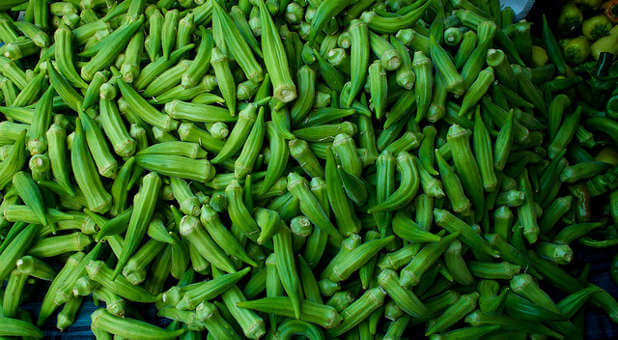Many people have heard of deadly nightshade, which is a poisonous plant, but there are a number of nightshade vegetables, both popular and not so common, that are safe for consumption. Edible species within the Solanaceae order include eggplant, bell peppers, potatoes, tomatoes, and paprika, as well as foods like pepino, tomatillo, and pimento.
Surprisingly, while the latter-mentioned foods are healthy food choices, there is growing evidence suggesting the alkaloids in nightshade vegetables may contribute to the onset and/or persistence of chronic pain and inflammation.
As part of the Solanaceae order, nightshades consist of more than 2,000 different botanical species, including perennial and annual plants, trees, and shrubs. The term Solanaceae originates from Latin and references the solanine alkaloid compound the nightshade plants produce. While not considered true nightshades, ashwagandha, goji berries, huckleberries, and blueberries also produce solanine. Solanine is a nerve poison within the plants, serving as a defense against plant-eating insects.
Solanine is just one of the steroid alkaloids and cholinesterase inhibiting glycoalkaloids in nightshade vegetables. Potatoes and eggplants contain solanine, peppers contain capsaicin, and tobacco contains nicotine. The glycoalkaloids in vegetables like potatoes have a negative impact on the permeability of the intestinal tract and contribute to Irritable Bowel Syndrome.
Dr. Norman F. Childers and Dr. M.S. Margoles write about the negative effects associated with the accumulation of glycoalkaloids in the body in an article appearing in The Journal of Neurological and Orthopedic Medical Surgery. According to Dr. Childers, the founder of the Arthritis Nightshades Research Foundation, the accumulation of glycoalkaloids, whether alone or in conjunction with other cholinesterase inhibitors like pesticides and caffeine, can have negative effects on the body.
Some of the effects include the onset of inflammation, muscular tenderness, pain, spasms, aching, and stiffness. The latter symptoms may only last a few hours after nightshades consumption, but the negative effects can last up to 90 days if the individual consumes large amounts of edible nightshades.
The effects of edible nightshade consumption may contribute to or worsen arthritic conditions. Osteoarthritis is one of the leading disabilities in the United States. According for the Centers for Disease Control and Prevention, as of 2012 there were 52.5 million diagnosed cases of arthritis in the U.S. The number of those affected is predicted to increase dramatically within the next 15 years and predictions suggest that by 2030, some 67 million individuals will have diagnosed arthritis. Roughly two thirds of all sufferers are females. The most common type of arthritis is Osteoarthritis, followed by conditions like rheumatoid arthritis. Arthritic conditions affect men, women, and children; as such conditions know no boundaries related to gender, age, or race.
The medical costs of such conditions can prove staggering; in 2003, the medical costs associated with arthritis were around 128 billion each year. Since the mid-1990s, medical care and disability related costs related to arthritis and other rheumatic conditions have exceeded $300 billion a year. Finally, the Institute of Medicine of the National Academies released a report in 2011 suggesting that 116 million people live with chronic pain conditions, which in turn is resulting in more than $635 billion in lost productivity and health care costs every year. Some experts assert that many arthritic conditions are misdiagnosed and may actually be caused from the consumption of edible nightshades instead.
90-Day Ban on Edible Nightshades
People suffering from musculoskeletal pain disorders, rheumatism, lupus, and alternative conditions related to arthritis often find that consuming edible nightshades has a negative impact on their health. To determine if nightshades are affecting an individual, it is recommended that the individual avoid all food sources falling under the definition of nightshades as well as those that have similar effects. The foods and products should be avoided for a period of 90 days.
Once the 90 days have passed, the individual can reintroduce one selection at a time back into the diet. The individual should take careful notes documenting how one feels after eating. If the individual notes any of the symptoms associated with nightshades consumption, then the food should be eliminated from one’s diet.
List of Edible Nightshades
Aubergine
Bell pepper
Blueberries (contain inflammation inducing alkaloids)
Cayenne pepper
Chili pepper
Eggplant
Goji berries
Gooseberries
Green pepper
Ground cherries
Homeopathic Nightshade (Belladonna) treatments
Huckleberry (contain inflammation inducing alkaloids)
Okra
Paprika
Pepino melon
Potatoes
Red pepper
Sorrel
Soy Sauce (US made with genetically modified soybeans cut from Petunia (a nightshade plant).
Tobacco
Tomarillos
Tomatillos
Tomatoes
Wax pepper
Additional Items to Eliminate
Baking powder made with potato starch.
Edible flowers like Devil’s Trumpets, Angel, Day Jasmine, Chalice Vine, and Petunia.
Envelope seals: Refrain from licking them as some may contain potato starch.
Medications, either over-the-counter or prescribed, containing potato starch filler.
Sleeping pills containing scopolamine or atropine.
Topical pain treatments containing capsicum: It originates from cayenne pepper.
Don Colbert, M.D. has been board-certified in Family Practice for over 25 years and practices Anti-aging and Integrative medicine. He is a New York Times best-selling author of books such as The Bible Cure Series, What Would Jesus Eat, Deadly Emotions, What You Don’t Know May be Killing You, and many more with over 10 million books sold. He is the Medical Director of the Divine Health Wellness Center in Orlando, Florida where he has treated over 50,000 patients.
For the original article, visit doncolbert.com.












